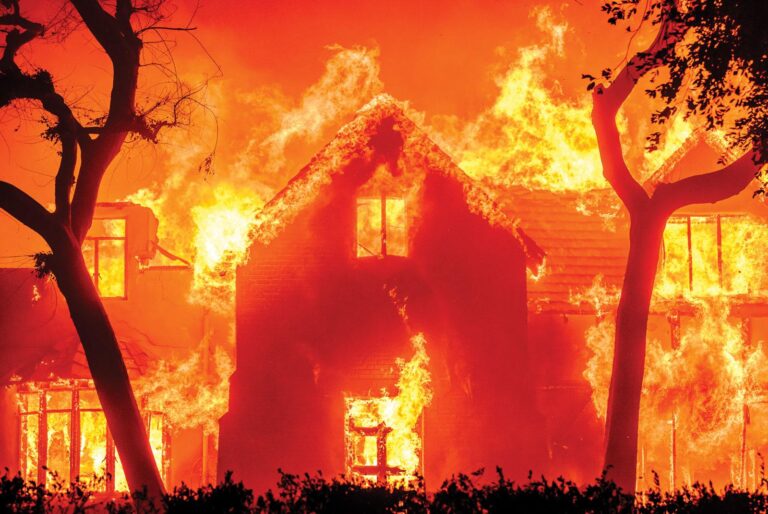Spain is on the verge of bringing a series of devastating wildfires under control after days of relentless battling by firefighters and emergency crews. Officials described the current phase as “a final push” to contain the blazes that have ravaged large swaths of land, threatening communities and causing widespread environmental damage. As authorities work to secure the remaining hotspots, the nation remains vigilant against the ongoing risks posed by extreme heat and dry conditions.
Spain Nears Full Containment of Devastating Wildfires as Authorities Intensify Efforts
After days of relentless battle against the blazes, emergency teams in Spain are now on the cusp of fully controlling the wildfires that have ravaged thousands of hectares across several regions. This pivotal moment comes as firefighters deploy intensified ground operations combined with aerial water bombing, working under challenging weather conditions marked by shifting winds and high temperatures. Authorities highlight the importance of community cooperation, evacuation protocols, and rapid response units that together contributed to the progress seen in the last 48 hours.
Key factors in containment efforts include:
- Deployment of over 1,200 firefighters from various provinces
- Use of advanced firefighting aircraft for targeted water drops
- 24/7 monitoring by meteorological services to predict fire behavior
- Active engagement with local residents to ensure safety and updates
| Region | Burned Area (ha) | Containment % | Evacuations |
|---|---|---|---|
| Catalonia | 4,500 | 95% | 1,200 |
| Andalusia | 3,200 | 90% | 800 |
| Valencia | 2,100 | 93% | 650 |
| Aragon | 1,700 | 97% | 400 |
Environmental and Community Impact of the Wildfires Across Affected Regions
The recent wildfires have wrought extensive devastation on the landscapes across multiple affected regions, leaving a profound environmental scar. Vast tracts of forest, already vulnerable due to prolonged drought conditions, have succumbed to the flames, resulting in the loss of biodiversity and disruption of fragile ecosystems. The charred terrain now faces heightened risks of soil erosion and impaired water retention, which could have long-term impacts on the region’s agricultural output and natural regeneration. Additionally, the thick plumes of smoke have significantly degraded air quality, posing immediate health concerns for both local residents and wildlife.
The human communities inhabiting these areas have endured considerable hardship as well, with evacuations uprooting thousands from their homes and critical infrastructure suffering severe damage. Relief efforts continue to focus on aiding displaced families and rebuilding devastated villages. Key challenges faced by communities include:
- Loss of homes and personal property
- Interrupted access to clean water and electricity
- Health risks associated with smoke inhalation
- Economic disruption from halted local industries
| Region | Estimated Area Burned (ha) | Displaced Residents | Recovery Status |
|---|---|---|---|
| Andalusia | 15,800 | 3,200 | Ongoing |
| Castilla-La Mancha | 11,400 | 1,500 | Stabilizing |
| Valencia | 9,600 | 2,100 | Under Control |
Experts Recommend Strengthening Fire Prevention Measures to Mitigate Future Risks
In light of the devastating wildfires that have ravaged regions across Spain this season, experts emphasize the urgent need for a comprehensive overhaul of current fire prevention frameworks. Authorities and environmental specialists alike agree that reinforcing community awareness, upgrading early detection systems, and increasing funding for forest management are critical steps to reduce vulnerability. Innovative solutions such as drone surveillance and AI-powered predictive modeling are being championed as valuable tools to provide real-time insights and faster responses to emerging fire threats.
Key recommendations also highlight the importance of collaboration between government agencies, local stakeholders, and scientific institutions, fostering a shared responsibility for safeguarding natural habitats. The following measures have been widely advocated to build resilience against future wildfire outbreaks:
- Enhanced controlled burns to reduce combustible vegetation effectively.
- Community training programs to improve preparedness and evacuation protocols.
- Investment in advanced firefighting equipment for rapid containment.
- Improved land-use planning to prevent urban encroachment into vulnerable forest zones.
| Measure | Expected Impact | Timeframe |
|---|---|---|
| Early Detection Systems | Reduce response time by 30% | 1-2 Years |
| Controlled Burns | Lower fuel loads, decrease fire intensity | Ongoing |
| Community Training | Increase public safety awareness | 6 Months – 1 Year |
Key Takeaways
As Spain moves toward fully containing the deadly wildfires, authorities remain vigilant in their efforts to prevent any resurgence. The near containment marks a significant step in controlling a disaster that has devastated communities and landscapes across the region. Officials continue to urge caution as firefighting teams push forward with the final operations to ensure the safety of residents and the restoration of affected areas. The situation serves as a stark reminder of the growing threat posed by climate change and the urgent need for comprehensive strategies to mitigate future wildfire risks.




